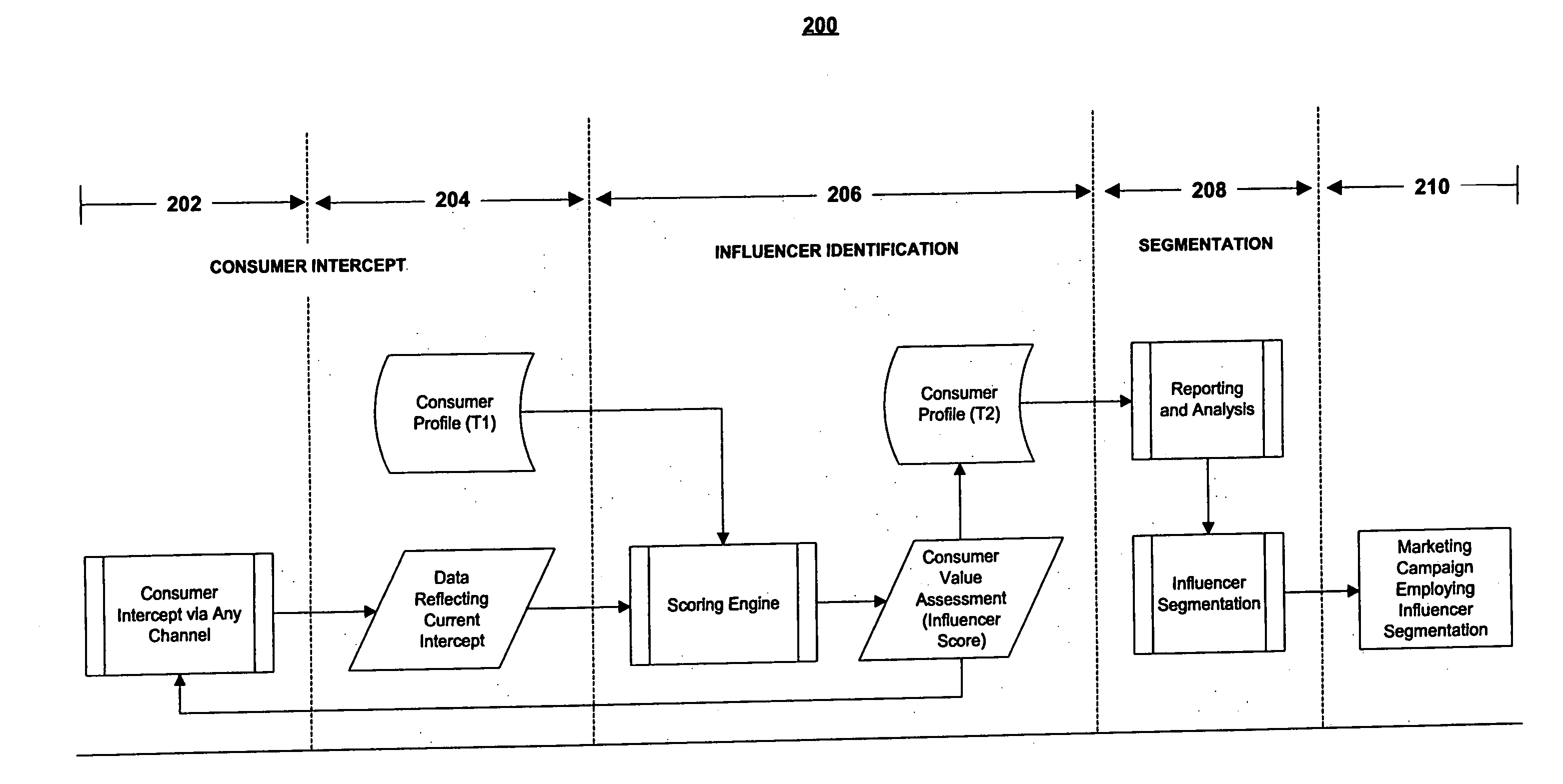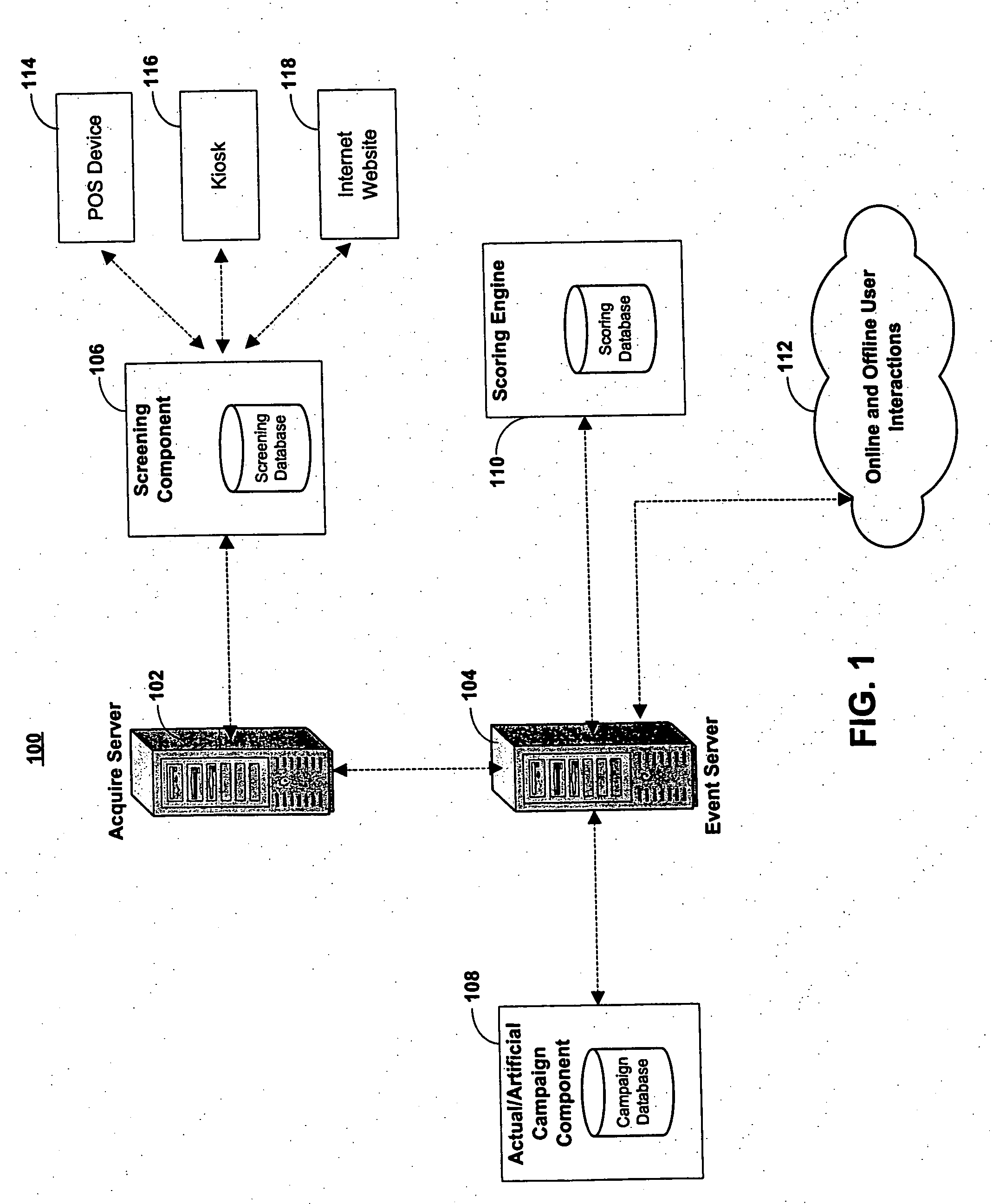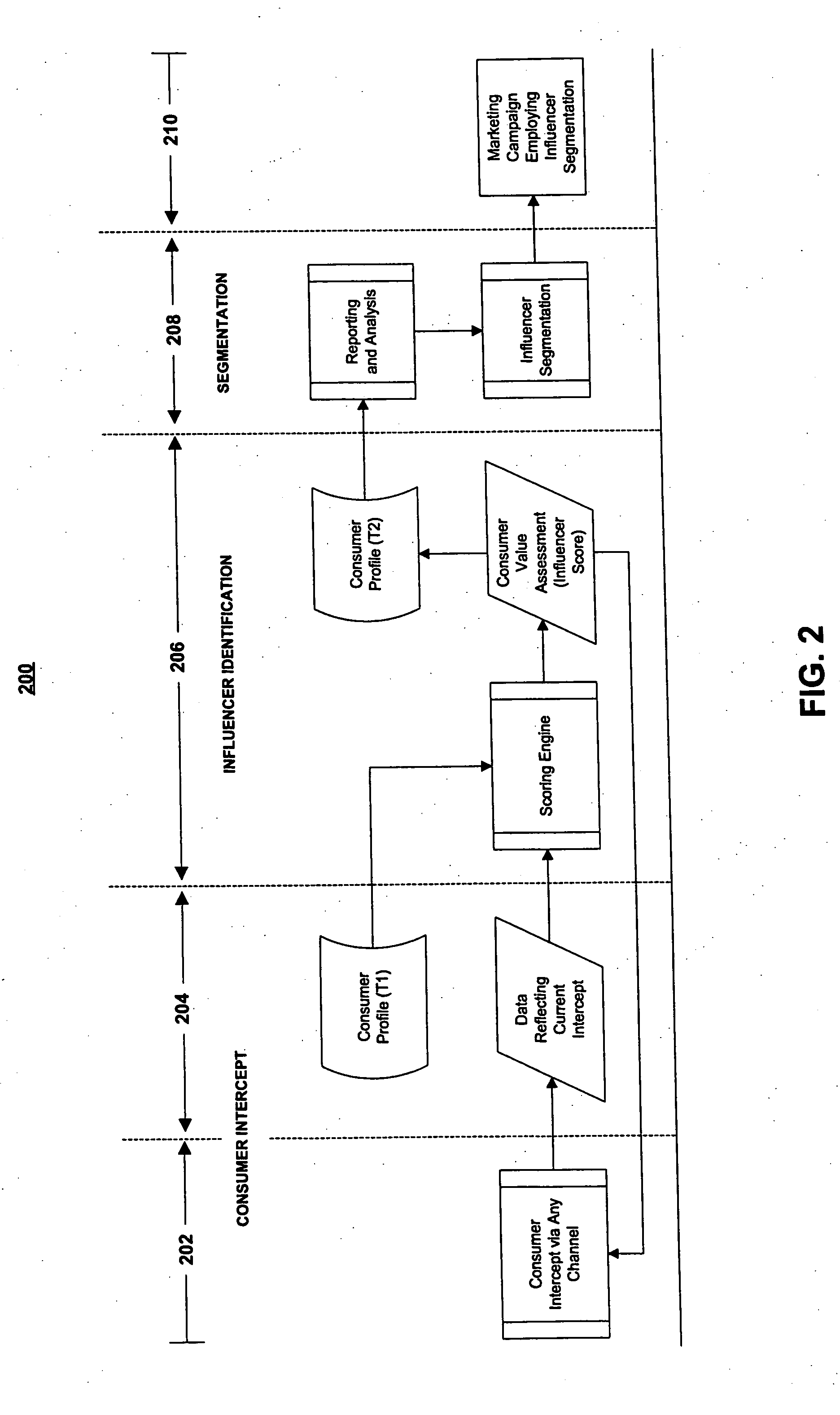[0007]In accordance with principles of the present invention, systems and methods for the identification, recruitment, enrollment, and scoring of influential members of social groups are provided. A potential influencer is first identified and screened through an influencer screening component. In some embodiments, this screening component includes a webpage with at least one electronic survey to be completed by the potential influencer. The electronic survey may include socio-demographic questions as well as questions relating to consumer behavior, such as spending and purchasing habits. The survey may also include one or more questions relating to the potential influencer's ability to influence other members of the potential influencer's social group. In other embodiments, this screening component may rely on observed behavior rather than information provided explicitly by the potential influencer. In still other embodiments, screening may occur at a point-of-sale (POS) system, kiosk, over the telephone, through traditional direct postal mail, through email, or through text (e.g., SMS, MMS) or instant messaging (IM) services.
[0008]Information relating to the screening event and the potential influencer may then be sent to a scoring engine. In response to completing the influencer screening component, one or more initial influencer trait scores may be computed for the potential influencer. These one or more initial influencer trait scores may be derived from information obtained or observed via the influencer screening component as well as information obtained from external sources of information (e.g., information provided by a marketer or other third party). The one or more influencer trait scores may relate to projected or anticipated levels of one or more influencer traits associated with the potential influencer. Based on the one or more initial influencer trait scores, the potential influencer may be rejected or enrolled as an influencer. If the potential influencer is rejected, no notification may be given, or the potential influencer may be directed to a third-party website (or sent information from a third-party). If the potential influencer is enrolled, the scoring engine may add the enrolled influencer and the screening event details to a scoring database. In some embodiments, an influencer tier level (e.g., tier 1, tier 2, or tier 3) may also be associated with the enrolled influencer.
[0009]After an influencer is enrolled, one or more of the influencer's initial influencer trait scores may be validated or refined. In some embodiments, the initial influencer trait scores may relate to one or more of the influencer traits of longevity, recency, participation, and diffusion. To validate or refine the initial influencer trait scores associated with an influencer, one or more marketing campaigns may be created. These marketing campaigns may be actual marketing campaigns pertaining to real products or services or artificial marketing campaigns pertaining to mock products or services. The marketing campaigns may be specifically created to obtain more information about the potential influencer and to refine or validate the influencer trait scores associated with the influencer through the observation of influencer behavior. In some embodiment, the observation of influencer behavior includes assessing an influencer's level of participation in one or more of the marketing campaigns.
[0010]After a marketing campaign is created, an event notification message may be delivered to the influencer. The event notification message may include an invitation to participate in the actual or artificial marketing campaign. The invitation may also include a link to the marketing campaign or other information in support of the campaign. The invitation and event notification message may be delivered to the influencer in a variety of ways, including, for example, via email, Instant Message (IM), text message, telephone call, or traditional direct postal mail. In some embodiments, event notifications are delivered to influencers by interactive overlays or prompts on a POS terminal, kiosk, or television. An event server monitors all influencer event activity and provides this information to the scoring engine. Based on information observed or derived from the influencer event activity, influencer trait scores associated with the influencer may be validated or refined. Influencer trait scores may be continuously or periodically refined even further using one or more subsequent marketing campaigns.
[0011]In one embodiment, a computer program running on a processor is provided for identifying, recruiting, enrolling, and scoring influential members of social groups. The computer program includes program logic configured to solicit and enroll social group members as influencers. The program logic may also be configured to send marketing campaign event notifications to groups of influencers meeting a pre-defined criteria. The program logic may then receive marketing event interaction information from the event server and calculate or refine at least one influencer trait score for each influencer in the group of influencers. The program logic may further be configured to periodically send additional marketing campaign event notifications to the group of influencers to further refine the influencers' influencer trait scores. In some embodiments, the influencer trait scores may relate to one or more of the influencer traits of longevity, recency, participation, and diffusion.
 Login to View More
Login to View More  Login to View More
Login to View More 


